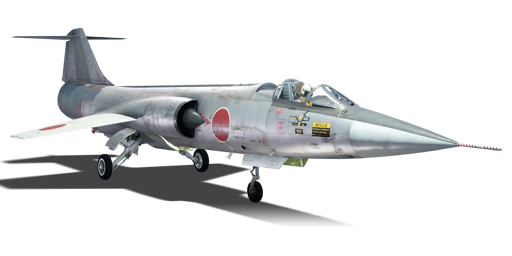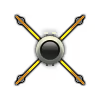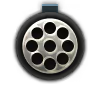



The F-104J, nicknamed 栄光 (Eiko, lit. Glory) or 三菱鉛筆 (Mitsubishi Pencil) by JASDF pilots, was the imported and license-produced F-104G solely for the JASDF as the winner of the F-X program, which sought for new interceptors against Soviet bomber fleets. The F-X project originally opted for a Japanese version of the F-100 from North American Aviation, but this was cancelled due to the lack of need for a fighter-bomber. Later in 1959, after evaluations on supersonic performance of available jets of the era, the JASDF eventually opted to introduce the F-104G but removing ground-attacking equipment from the Starfighter, which in turn became what's known as the F-104J and was produced by Mitsubishi Heavy Industries (MHI) domestically. As future jets like the F-4EJ and F-15J joined the JASDF between 1970s to 1980s, as well as the infamous reliability of Starfighters both domestically and overseas, the JASDF phased out the fleet of F-104Js after 1986. Some of these jets were supplied to the ROCAF under Project Alishan #9 (阿里山9號計劃) after they returned to USA (F-104Js were property of both the USAF and JASDF), while some were modified into UF-104J target drones for combat training.
Introduced in Update "Starfighters", the F-104J was the main interceptor of the JASDF with precise ground-attack capabilities removed. Although being known as a jet with poor manoeuvre capabilities at low speed, with its high top-speed and sufficient missile payload, players can certainly cause major troubles to enemy aircraft and enemy attackers/bombers will need to think twice before entering the combat area.
flaps
flaps
flaps
brake
| Belt | Belt filling | Armor penetration (mm) at a distance: | |||||
|---|---|---|---|---|---|---|---|
| 10 m | 100 m | 500 m | 1000 m | 1500 m | 2000 m | ||
| HEF-I/API-T/AP-I | 40 | 36 | 22 | 12 | 6 | 3 | |
| HEF-I/HEF-I/API-T/HEF-I/HEF-I/AP-I | 40 | 36 | 22 | 12 | 6 | 3 | |
| API-T/AP-I/AP-I/AP-I/HEF-I | 40 | 36 | 22 | 12 | 6 | 3 | |
| HEF-I/AP-I/AP-I | 40 | 36 | 22 | 12 | 6 | 3 | |
| Name | Weight | Slot | ||||||
|---|---|---|---|---|---|---|---|---|
| 72.6 kg |  |  |  |  |  |  | ||
| 76.4 kg |  |  |  |  |  |  | ||
| 76.9 kg |  |  |  |  |  |  | ||
| 7 × | 101.1 kg |  |  | |||||
| 19 × | 233.8 kg |  |  | |||||












Flight performance | |
|---|---|
Survivability |
|---|
Weaponry | ||
|---|---|---|